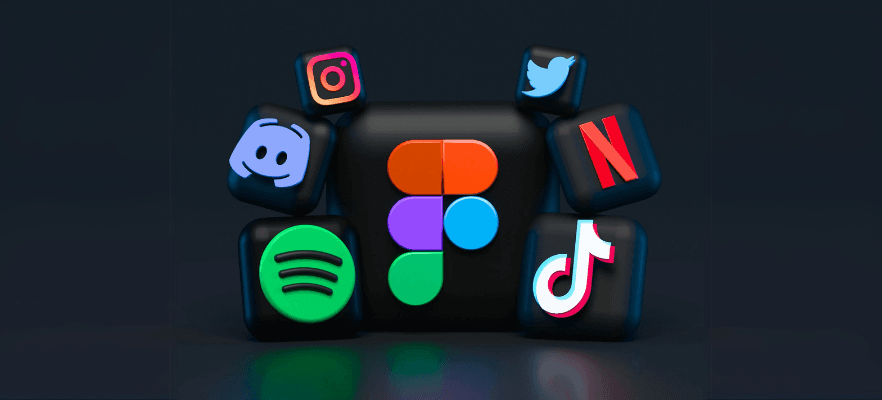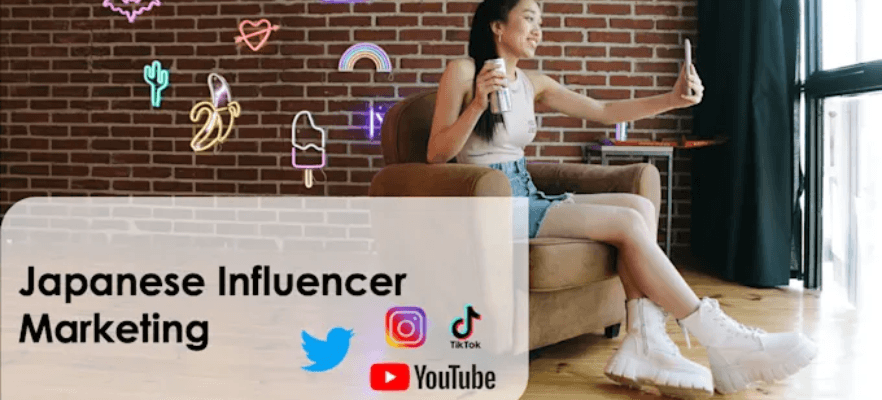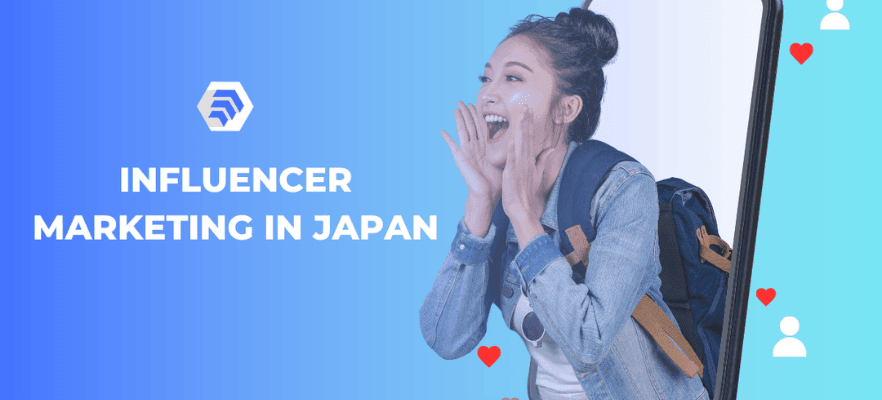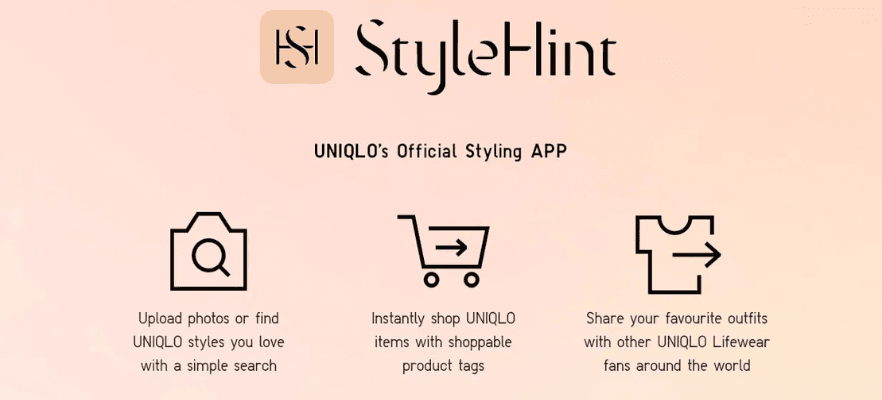Influencer Marketing in Japan – A Complete Guide for Brands & Marketers
By Macy -09/06/2025 UTC.
Japan is one of the most unique and sophisticated markets for influencer marketing, with high social media engagement and a strong preference for trusted recommendations. Unlike Western markets, where influencers focus on personal branding and direct product promotions, influencer marketing in Japan revolves around subtle storytelling, high production quality, and long-term brand relationships.
For brands looking to sell in Japan, working with influencers can significantly boost brand awareness, credibility, and sales—especially in industries like beauty, fashion, gaming, and food & beverage. However, to succeed, companies must understand Japan’s influencer landscape, platform preferences, and consumer behavior.
This guide will walk you through:
- Why influencer marketing is crucial in Japan
- The best social media platforms to use
- The types of influencers and how to work with them
- How to structure a successful influencer marketing campaign
- How influencers drive sales on Rakuten, Amazon Japan, and Yahoo! Shopping
Let’s dive in!
1. Why Influencer Marketing is Key for Selling in Japan
Japan is a trust-driven market, meaning consumers prefer to buy from brands that feel familiar and reliable. This is where influencers come in. Japanese consumers rely heavily on recommendations from influencers rather than direct advertising. A positive endorsement from a trusted influencer can significantly increase credibility and conversions.
Japanese consumers value authenticity over direct advertising
Traditional ads often struggle in Japan because consumers find them intrusive. Instead, they prefer subtle, well-crafted influencer content that feels organic rather than promotional. Storytelling, aesthetic presentation, and long-term partnerships play a huge role in winning consumer trust.
High mobile & social media usage
In Japan, approximately 80.8% of internet users utilize social media, providing a significant digital audience for influencers (source: Statista). Platforms like Instagram, YouTube, and Twitter are prominent, while LINE remains the primary tool for brand communication. This high level of social media engagement offers influencers direct access to a large and engaged audience.https://www.linkedin.com/company/research-and-markets
The eCommerce boom in Japan
According to Statista, Japan's eCommerce market is projected to reach a revenue of approximately $190.53 billion USD by 2025. This market is expected to grow at an annual rate of 8.05% from 2025 to 2029, reaching a projected volume of $259.68 billion USD by 2029.
Key platforms such as Rakuten, Amazon Japan, and Yahoo! Shopping are driving this growth. Influencers play a significant role in promoting products on these platforms through strategies like affiliate links, discount codes, and live-streaming promotions. By 2029, the number of eCommerce users in Japan is expected to be substantial, with user penetration reaching 87.3%.
For businesses looking to expand into Japan, using influencer marketing is one of the most effective ways to build brand awareness and drive sales. Now, let’s explore the best platforms for influencer marketing in Japan.
2. The Best Platforms for Influencer Marketing in Japan
Japan’s influencer marketing market is projected to surpass 164 billion yen by 2029, fueled by the growing dominance of YouTube, Instagram, and TikTok. To succeed in influencer marketing in Japan, selecting the right social media platform is essential.

2.1. Instagram
Instagram is Japan’s most popular influencer marketing platform, especially for fashion, beauty, food, and travel brands. Japanese users engage heavily with high-quality, visually aesthetic content, making Instagram perfect for product promotions.
- Influencer content formats: Stories, Reels, carousels, and IGTV.
- Best for: Beauty brands, lifestyle products, and travel businesses.
- Why it works: Japanese consumers love well-designed posts, storytelling captions, and subtle branding over direct ads.
Brands looking to enter the Japanese market should prioritize Instagram influencers for maximum engagement and sales conversions.
2.2. YouTube
YouTube is huge in Japan, particularly for tech, gaming, beauty, and educational content. Japanese consumers prefer long-form, in-depth product reviews before making purchasing decisions.
- Influencer content formats: Unboxings, how-to guides, vlogs, and comparison videos.
- Best for: Tech gadgets, gaming, beauty, and lifestyle brands.
- Why it works: Japanese YouTubers build strong trust with their audiences, making their recommendations highly influential.
For brands looking to build credibility and trust, partnering with YouTube influencers is one of the best long-term strategies in Japan.
2.3. Twitter (X)
Twitter (X) remains one of Japan’s most active social media platforms, with users actively engaging in discussions, trends, and viral content. Unlike Instagram and YouTube, which are visually driven, Twitter in Japan is all about community engagement and real-time interactions.
- Influencer content formats: Short tweets, retweets, live discussions, and hashtags.
- Best for: Gaming, tech, pop culture, and event-based marketing.
- Why it works: Japanese Twitter influencers heavily influence trends, making it an ideal platform for brand awareness campaigns.
If your goal is to create viral marketing campaigns in Japan, Twitter (X) is a must-use platform.
2.4. TikTok
TikTok has rapidly gained traction in Japan, especially among Gen Z and Millennials. It’s a powerful platform for brands targeting younger audiences with short, entertaining content.
- Influencer content formats: Short videos, challenges, product showcases.
- Best for: Fashion, lifestyle, beauty, and entertainment brands.
- Why it works: TikTok’s trend-driven nature allows products to go viral quickly.
If you’re marketing to young consumers in Japan, collaborating with TikTok influencers can boost brand exposure and engagement significantly.
2.5. LINE
LINE is Japan’s dominant messaging app, but it also serves as an influencer marketing tool through LINE blogs, brand collaborations, and direct promotions.
- Influencer content formats: LINE blogs, exclusive promotions, direct messaging campaigns.
- Best for: Localized campaigns, B2C communication, and loyalty programs.
- Why it works: Japanese consumers trust personalized, exclusive brand deals on LINE more than public social media ads.
While LINE is not a traditional influencer platform, it remains a powerful tool for direct engagement and building brand loyalty in Japan.
>>> Read more: An A-Z Guide to Conducting Market Research in Japan in 2025
3. Five Types of Influencers in Japanese Influencer Marketing
Influencer marketing in Japan isn't just about choosing the right platform—it’s also about working with the right type of influencer. Japanese influencers fall into different categories based on follower count, engagement, and influence level.

3.1. Mega-influencers & celebrities
Mega-influencers and celebrities in Japan have over 1 million followers and often include actors, models, musicians, and TV personalities. These influencers have massive reach, making them ideal for brand awareness campaigns.
- Best for: Luxury brands, major product launches, and nationwide campaigns.
- Pros: Huge exposure, credibility boost.
- Cons: Expensive, lower engagement compared to smaller influencers.
Most international brands working with mega-influencers partner with celebrity agencies to facilitate deals.
3.2. Macro-influencers (100K – 1M followers)
Macro-influencers in Japan specialize in specific niches like beauty, fashion, fitness, and gaming. They have loyal and engaged audiences, making them an effective choice for high-impact brand collaborations.
- Best for: Mid-sized brands looking for large-scale influencer partnerships.
- Pros: High engagement, strong niche authority.
- Cons: Still expensive, but more affordable than celebrities.
These influencers are ideal for campaigns that need both reach and credibility without the extreme costs of mega-influencers.
3.3. Micro-influencers (10K – 100K followers)
Micro-influencers are one of the most effective influencer types in Japan because of their strong community engagement and trust factor. Japanese consumers value authenticity, and micro-influencers often have a dedicated audience that listens to their recommendations.
- Best for: Brands wanting high engagement and targeted marketing.
- Pros: Affordable, trusted by followers, higher conversion rates.
- Cons: Lower reach than macro-influencers.
Micro-influencers are ideal for eCommerce brands, local businesses, and product launches.
3.4. Nano-influencers (<10K followers)
Nano-influencers in Japan have a small but highly engaged audience. These influencers are seen as friends rather than celebrities, making their recommendations feel more personal and trustworthy.
- Best for: Small brands, niche products, and grassroots marketing.
- Pros: High engagement, cost-effective, authentic relationships with followers.
- Cons: Limited reach, requires multiple influencers for impact.
Brands often partner with multiple nano-influencers to scale their reach while keeping costs low.
3.5. VTubers – Japan’s virtual influencer trend
VTubers (Virtual YouTubers) are a unique trend in Japan, featuring anime-style virtual avatars instead of real-life influencers. They are hugely popular in the gaming, tech, and entertainment industries.
- Best for: Gaming, tech, anime, and youth-oriented brands.
- Pros: Massive engagement, growing audience, unique digital branding opportunities.
- Cons: Not ideal for every industry, requires customized collaborations.
Brands looking to target Japan’s otaku culture should consider working with VTubers for influencer marketing.
4. How to Run a Successful Japan Influencer Marketing Campaign
A well-executed influencer marketing campaign in Japan can drive brand awareness, engagement, and sales. Here’s a step-by-step guide to creating a high-impact campaign.

4.1. Step 1: Define your campaign goals
Before working with influencers, the first thing is to define what you want to achieve. Here are some common goals:
- Brand awareness: Reach a larger audience and establish credibility.
- Engagement: Increase interactions, shares, and discussions about your brand.
- Conversions: Drive traffic to your eCommerce store and increase sales.
For example, if you run a beauty brand launching a new product, you may need to focus on Instagram influencer partnerships to boost awareness and generate early sales.
4.2. Step 2: Select the right influencers
Choosing the right influencer is truly critical for success. You can consider these factors to decide:
- Relevance: Does the influencer’s audience match your target market?
- Engagement rate: Higher engagement is better than high follower count.
- Content style: Does their aesthetic and messaging align with your brand?
Let’s say, a food brand, for instance, should collaborate with Instagram food bloggers who specialize in Japanese cuisine rather than general lifestyle influencers.
4.3. Step 3: Build a long-term relationship
Unlike Western influencer marketing, where one-off promotions are common, Japanese consumers prefer long-term brand relationships. If you want to have a successful campaigns, here’s what to focus on:
- Multiple collaborations rather than a single post.
- Ambassador programs where influencers promote a brand consistently.
- Exclusive partnerships that strengthen brand trust.
For example, a Japanese skincare brand working with a beauty influencer for 6 months will see higher credibility and engagement than a one-time post.
4.4. Step 4: Customize content for the Japanese market
Japanese influencer content differs from Western styles. You can refer to these practices to customize content when selling in Japan:
- Subtle storytelling: Soft-sell approaches work better than direct ads.
- High-quality visuals: Japanese consumers appreciate aesthetics.
- Cultural relevance: Adapt messaging to fit Japanese consumer expectations.
For example, instead of saying "Buy this amazing product now!", a Japanese influencer might share a personal story about how the product improved their life.
4.5. Step 5: Measure performance & optimize
Tracking performance ensures you’re getting ROI from your influencer campaign. Here are some metrics for you to track the efficiency of the campaign for influencer marketing in Japan:
- Engagement rate: Likes, comments, shares.
- Conversion rate: Sales generated from influencer links.
- Follower growth: New audience attracted through influencer promotion.
As selling in Japan, you should use UTM tracking links, promo codes, and analytics tools to measure influencer impact.
5. How Influencers Drive Sales on eCommerce Platforms in Japan
Influencers in Japan play a crucial role in driving traffic and conversions on eCommerce platforms like Rakuten, Amazon Japan, and Yahoo! Shopping.
5.1. Using influencers for Rakuten, Amazon Japan & Yahoo! Shopping
Japan’s three largest eCommerce platforms—Rakuten, Amazon Japan, and Yahoo! Shopping—are preferred by Japanese consumers for online purchases.
Affiliate links & referral programs
- Influencers use unique tracking links that direct followers to the brand’s store or product page.
- Affiliate commissions motivate influencers to promote products authentically, increasing conversions.
Exclusive discount codes
- Brands partner with influencers to offer limited-time discount codes (e.g., "INFLUENCER10" for 10% off).
- Japanese consumers are price-conscious, making influencer-exclusive deals highly effective.
Live shopping & product demos
- Some influencers host live product demonstrations on Rakuten Live or Amazon Live, helping potential buyers see the product in action before purchasing.
- Live-streaming creates a sense of urgency and encourages impulse buying.
5.2. Influencer promotions & Affiliate marketing
Affiliate marketing is a highly effective strategy in Japan, allowing brands to pay influencers based on sales performance rather than a fixed fee.
Rakuten & Amazon influencer programs
- Both Rakuten and Amazon Japan have official influencer programs that allow influencers to earn commissions by promoting products.
- Popular in fashion, tech, and beauty industries, where influencers create curated store pages featuring their favorite items.
SEO & Search boosting via influencer mentions
- Rakuten & Amazon Japan’s search algorithms rank products higher when they receive more traffic and conversions.
- Influencers drive organic traffic to product listings, improving visibility in marketplace search results.
Social proof & UGC (User-Generated Content)
- Japanese consumers rely on reviews and recommendations before purchasing.
- Influencer-led product testimonials and unboxing videos on YouTube & Instagram act as trusted reviews.
6. The Role of Influencer Marketing Agencies in Japan
Working with an influencer marketing agency in Japan can save brands time and effort by handling influencer discovery, campaign management, and legal compliance. Agencies understand the Japanese market, ensuring that brands connect with the right influencers while following best practices.
Why work with an influencer marketing Japan agency?
If you’re new to Japan’s market, you may find that Japan’s influencer landscape is challenging, especially for foreign brands. Partnering with an influencer marketing agency wil ensure a smoother, more effective campaign with measurable results.
What to look for in an influencer marketing agency?
Not all influencer marketing agencies are the same. To ensure successful collaboration, brands should consider agencies that specialize in their industry, offer transparent pricing, and have strong influencer networks.
Top 5 influencer marketing agencies in Japan
Several agencies specialize in Japanese influencer marketing, helping brands connect with top-performing influencers across Instagram, YouTube, TikTok, and Twitter (X). Here are some of the best options.
7. Case Studies: Successful Influencer Marketing in Japan
UNIQLO’s StyleHint campaign is a prime example of successful influencer marketing in Japan, seamlessly integrating technology, community engagement, and influencer collaboration. The StyleHint app functions as a fashion search engine, allowing users to upload outfit photos and discover similar UNIQLO products through image recognition.

To drive engagement, UNIQLO partnered with fashion influencers, showcasing curated styles and outfit inspirations. This approach encouraged user-generated content, fostering a community-driven shopping experience. The campaign not only enhanced brand awareness and customer interaction but also reinforced UNIQLO’s digital transformation strategy, bridging the gap between social engagement and online-to-offline retail sales in Japan.
8. FAQs About Influencer Marketing in Japan
How big is the influencer marketing market in Japan?
As of 2024, Japan's influencer marketing expenditure is projected to reach approximately 86 billion Japanese yen.
What is the largest marketing company in Japan?
Japan’s largest advertising company is Dentsu Group Inc., followed by Hakuhodo and ADK Holdings. These agencies dominate traditional advertising, digital marketing, and influencer campaigns.
What is the Japanese style of advertising?
Japanese advertising focuses on storytelling, emotional connections, and aesthetic appeal rather than aggressive sales tactics. Brands use subtle messaging, nostalgia, and celebrity endorsements to build trust.
9. Final Thoughts: Is Influencer Marketing in Japan Right for Your Brand?
Influencer marketing in Japan is a powerful tool for building brand awareness, engaging local audiences, and driving sales. With the right influencer partnerships and platform strategy, brands can successfully enter Japan’s highly engaged digital market.
If you’re planning to sell in Japan, now is the perfect time to make it simple and cost-effective. Contact Ezbuy Japan today to learn more about how we can help with any questions—we’re here to assist you!